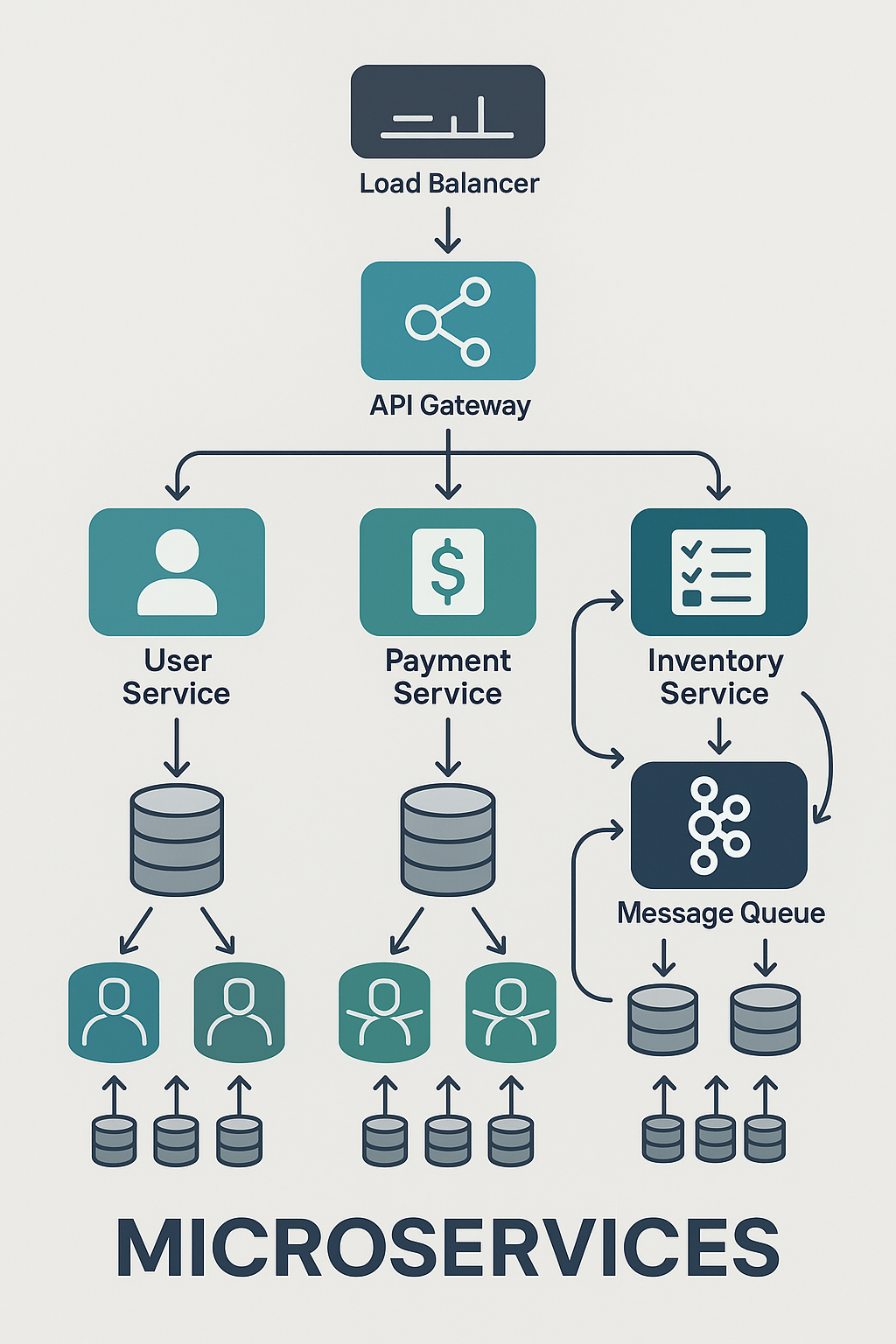Microservices Pitfalls and Best Practices
Introduction
Microservices architecture became popular as systems grew in scale and complexity. Instead of a single monolithic codebase, applications are broken into smaller, independent services that can be developed, deployed, and scaled separately. This flexibility made microservices the go-to choice for many large-scale companies, including those in FAANG/MAANG. However, microservices come with both advantages and significant pitfalls. Let’s explore them with real-world case studies.

Advantages of Microservices
Key Benefits
- Scalability: Each service can scale independently, ensuring efficient resource utilization.
- Team Autonomy: Small, cross-functional teams can own services end-to-end.
- Resilience: Failure in one service doesn’t necessarily bring down the entire system.
- Technology Flexibility: Teams can use different languages or frameworks as needed.
- Deployment Velocity: Independent deployments enable faster iterations.
Case Studies: Microservices Advantages in Action
- Netflix: One of the earliest adopters. Moving to microservices allowed Netflix to handle millions of concurrent users globally, scaling streaming and recommendation services independently.
- Amazon: Broke the monolith into “two-pizza teams” owning independent services. This enabled Amazon to release new features faster, powering its transformation into a massive e-commerce and cloud platform.
- Spotify: Uses microservices to support personalized recommendations, playlists, and social features, enabling rapid experimentation without impacting the core music service.
These companies proved that microservices can fuel agility and scalability — but only with the right culture, tooling, and practices.
Pitfalls of Microservices
Despite the benefits, microservices introduce complexity:
- Over-Granularity: Splitting services too aggressively creates coordination overhead.
- Distributed System Challenges: Increased network calls, latency, and partial failures.
- Data Management: Maintaining consistency across services is hard.
- Monitoring Complexity: Observability becomes critical across hundreds of services.
- Versioning and Compatibility: Backward compatibility issues between services.
Case Studies: When Microservices Backfired
- Uber: Initially scaled into thousands of microservices. Coordination became so difficult that Uber had to consolidate into a Domain-Oriented Microservices model, grouping services into logical domains.
- Twitter (X): Early microservices adoption led to complex inter-service communication overhead. They later shifted to a hybrid architecture with stronger modular boundaries.
- Amazon: Even with strong microservices adoption, they faced operational sprawl and introduced service meshes and internal developer platforms to tame complexity.
Lesson: Microservices are not a silver bullet. Over-engineering leads to diminishing returns.
Best Practices
To avoid pitfalls:
- Domain-Driven Design (DDD): Align services with business domains.
- API Gateway: Centralize and standardize access.
- Event-Driven Architecture: Use message queues (Kafka, SQS, Pub/Sub) for async communication.
- Observability: Implement tracing, logging, and metrics across all services.
- Resilience Patterns: Circuit breakers, retries, bulkheads to handle failures gracefully.
- Automation: CI/CD pipelines for consistent deployments.
Code Example: Scalable Microservice in Java (Spring Boot)
import org.springframework.boot.SpringApplication;
import org.springframework.boot.autoconfigure.SpringBootApplication;
import org.springframework.http.ResponseEntity;
import org.springframework.web.bind.annotation.GetMapping;
import org.springframework.web.bind.annotation.PathVariable;
import org.springframework.web.bind.annotation.RestController;
import java.util.HashMap;
import java.util.Map;
@SpringBootApplication
public class MicroserviceApplication {
public static void main(String[] args) {
SpringApplication.run(MicroserviceApplication.class, args);
}
}
@RestController
class UserController {
private static final Map<Long, String> users = new HashMap<>();
static {
users.put(1L, "Alice");
users.put(2L, "Bob");
}
@GetMapping("/users/{id}")
public ResponseEntity<User> getUser(@PathVariable Long id) {
String name = users.get(id);
if (name == null) {
return ResponseEntity.notFound().build();
}
return ResponseEntity.ok(new User(id, name));
}
static class User {
private final Long id;
private final String name;
public User(Long id, String name) {
this.id = id;
this.name = name;
}
public Long getId() { return id; }
public String getName() { return name; }
}
}- Explanation:
- Implements a REST API for user data.
- Designed to scale horizontally (deploy multiple replicas in Kubernetes).
- In production, replace in-memory data with a database.
Interview Perspective
- Be ready to explain both sides: benefits and pitfalls.
- For design questions, emphasize trade-offs: “Microservices are powerful but add operational complexity — I’d start with a modular monolith and evolve into microservices when scale demands it.”
- Mention observability, DDD, and resilience patterns in interviews.
Conclusion
Microservices enable scalability, agility, and team autonomy, but they also introduce complexity and operational overhead. FAANG case studies show that success comes from balancing granularity, applying best practices, and evolving the architecture over time. Microservices should be a deliberate choice, not a default.
Next Step: Explore CI/CD Pipelines to see how microservices are deployed at scale.